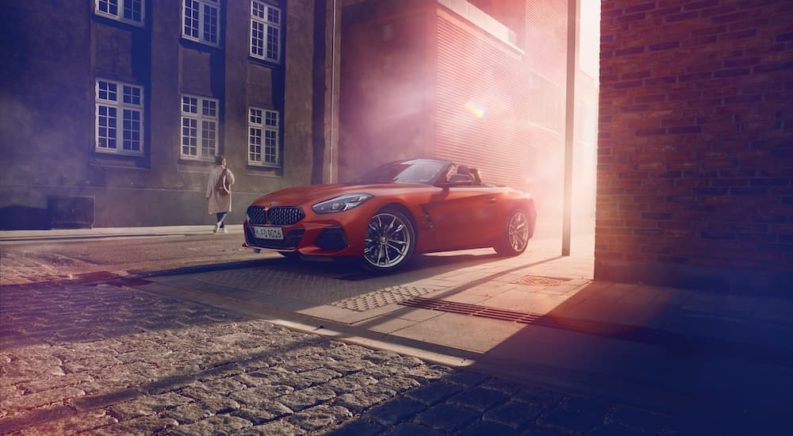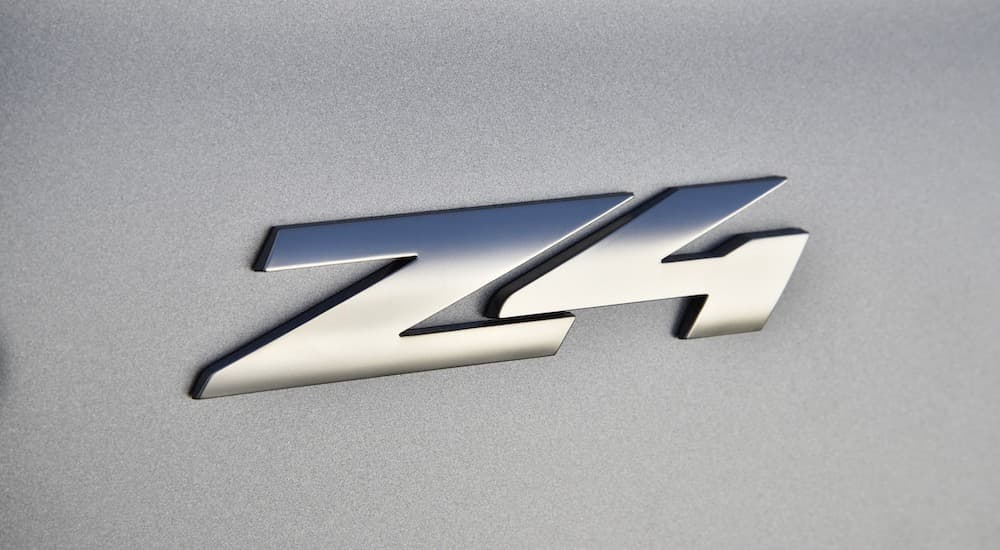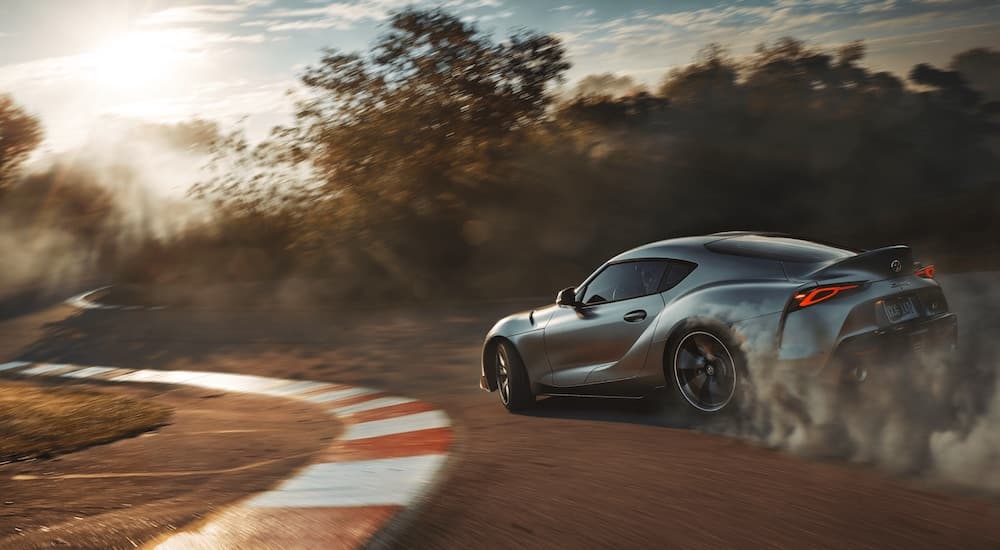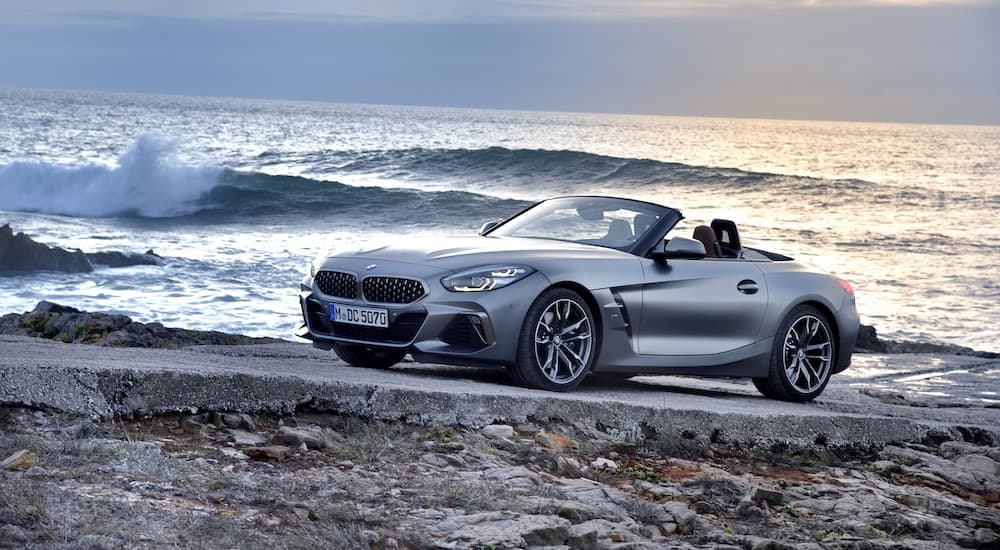We’ve all heard the jokes about the “Zupra,” and there are few car enthusiasts left who don’t know that the new Toyota Supra is really a BMW Z4 at its heart. Rather than rehash the debate over whether the A90 is a “real” Supra, it might be worth embracing the controversy and asking which of these two cars is the better BMW roadster. Afterall, even if the Supra doesn’t wear the blue and white BMW badge, it was designed in Bavaria and built on the same Austrian production line as the Z4. And although the Z4 is a convertible and the Supra is a liftback, these two roadsters target the same market segment with similar features, performance, and price. While we understand if you prefer to have BMW badges on your BMW sports car or you just prefer shopping at a BMW dealership, we also understand sacrificing a bit of perceived prestige to get a better car. So, which of these two “BMW” models is the better pick?
Unlikely Partners
The story of how BMW ended up building sports cars for Toyota is a strange one. While both brands have built their share of high-performance icons, neither is known as a sports car manufacturer. Aside from the short-lived BMW M1 supercar, BMW’s sports car heritage is confined to the on-again/off-again Z series. First introduced for 1989, the Z has gone through six generations, with gaps in production from 1992-1995 and 2016-2018. It was during that second lapse in production that the BMW-Toyota partnership began.
Perhaps surprisingly, Toyota has actually built more sports cars than BMW has, including the S800, 2000GT, MR2, GR86, and of course, the Supra. However, Toyota’s focus on reliable mass-market cars meant that in the mid-2000s, it found itself without a single sporty car in its lineup. Toyota’s new CEO, Akio Toyota, set out to change that, seeking to revive two of Toyota’s most famous performance nameplates: the AE86 and the Supra. However, he faced an uphill battle as the task of developing brand-new sports cars proved monumental even for a company of Toyota’s size.
While seemingly unlikely partners, BMW and Toyota found themselves in a similar situation and discovered that they each had something the other needed. Toyota needed a world-class sports car with an inline-6 engine to carry on the Supra spirit. However, Toyota had neither the recent experience to design such a car nor an available inline-6 engine to work with. BMW had both recent sports car experience and an incredible inline-6 engine but lacked the resources to justify designing and building a low-production sports car. By working together, the two companies could both get what they wanted, and two similar cars could be built, sharing parts but each following a different heritage.
The Same, But Different
The new BMW Z4 arrived for the 2019 model year, sporting unmistakable BMW design cues, from the kidney grille to the sharp body creases. The new Supra arrived a year later with a completely different and somewhat polarizing look that combined flowing body lines with the numerous fake vents that have become something of a Toyota trademark lately. Unlike Toyota’s other collaborative sports car project, which resulted in the virtually identical Toyota 86 and Subaru BRZ, the casual observer would never have guessed that the Z4 and the Supra were nearly identical twins beneath the skin.
However, the interiors of the two cars betray their common origins. The cabin of the Supra is thoroughly BMW, including European-style controls and an unmistakably BMW infotainment system. Still, it doesn’t quite provide the same level of luxury as the Z4. For instance, the Z4 comes with a 10.25-inch touchscreen, a matching 10.25-inch digital instrument cluster, and several shades of Vernasa leather upholstery, while the Supra is limited to dual 8.8-inch displays and simple black leather seats. While the Z4 continues its tradition of being a luxurious grand tourer, the Supra embraces a sportier side that emphasizes performance over comfort.
Originally, the performance of the two models also had a few differences, although they have become more similar in their time on the market. The 2019 BMW Z4 debuted with the choice between a 2.0L turbocharged inline-4 with 255 hp or a 3.0L turbocharged inline-6 with 382 hp. Meanwhile, the 2020 Toyota Supra was only offered with one engine: a 3.0L turbocharged inline-6 with 335 hp. While both cars used the BMW B58 inline-6, the Supra had the slightly different B30C version, while the Z4 had the B30O1. However, this was remedied for the 2021 model year, when the Supra received the same 382 hp engine as the Z4.
The 2021 model year also saw a more affordable variant of the Supra introduced, powered by the same 2.0L turbocharged inline-4 as the base model Z4. This brought the two cars even closer together in terms of performance options, although this is set to change for the upcoming 2023 model year. While BMW sells the Z4 with a manual transmission in some markets, here in America, the Z4 and Supra have only been available with an 8-speed automatic. However, the 2023 Supra is adding a 6-speed manual option for the inline-6 engine. This should appeal to many enthusiasts but is also another example of the Z4’s more luxury-focused nature.
Does More Luxury Mean Less Performance?
Although the Supra tends to be a bit more sport-oriented than the Z4, it isn’t necessarily the better performance car––particularly if you are comparing the inline-4 versions of these cars. The two cars share a platform, have identical power output, and even have the same wheelbase and track width. However, there are some differences. As a slightly better-equipped convertible, the Z4 is heavier than the Supra. The difference is about 100 lbs in the four-cylinder models and about 50 lbs in the six-cylinder cars. Still, the BMW counters this weight difference with its standard and available features.
The base models of both cars are fairly basic, but the four-cylinder Z4 can be optioned with the Dynamic Handling Package, which includes adaptive suspension and an electronically-controlled limited-slip differential. This package also replaces the standard single-piston floating caliper front brakes with Brembos and adds larger rotors front and rear. None of these performance features are available for the four-cylinder Supra, and its smaller brakes are a known weakness in high-speed driving. Combined with the base model Supra’s rather spartan interior, which comes with manual seats and a pitiful four-speaker sound system, there is no reason to choose it over the entry-level Z4 aside from its lower price.
The story is somewhat different when comparing the inline-six versions of these two cars. Along with the larger engine, the adaptive suspension, advanced limited-slip differential, and larger Brembo brakes all come standard. Even the tires are the same BMW-specific Michelin Pilot Super Sports. With all of these similarities, it is no surprise that their performance is effectively identical. The only real measurable difference is that the Supra is about two-tenths of a second faster on the quarter-mile, thanks to its slightly more aerodynamic hardtop design. Still, there are some more subjective differences between the cars.
In keeping with its greater emphasis on luxury, the Z4 feels a little softer and more comfortable to drive. Although it is just happy pushing the limits on the track, it was tuned to be more relaxing and require less effort from the driver––the sort of car you can take on a weekend Autobahn run, cruising at over 100 mph while chatting with your passenger. In contrast, the Supra embraces its sports car nature, offering a slightly sharper feel that makes the driver pay attention to the road ahead. Opting for the new manual transmission in the 2023 model will only heighten the Supra’s demand for attention.
Which Is the Better BMW?
Going strictly by the specs, it is difficult to claim that the Supra beats the Z4 in any meaningful way. The four-cylinder models are a particularly lopsided battle, with the Z4 simply trouncing the Supra in every way, from luxury features to performance options. The six-cylinder models are a much closer fight, with barely a hair’s difference between the two when it comes to performance. However, the Z4 comes out on top for offering a more luxurious experience. While the Supra does offer a sharper and more enthusiast-oriented driving experience, it is difficult to say that makes up for its other shortcomings. If money is no object, the Z4 is clearly the superior BMW roadster.







